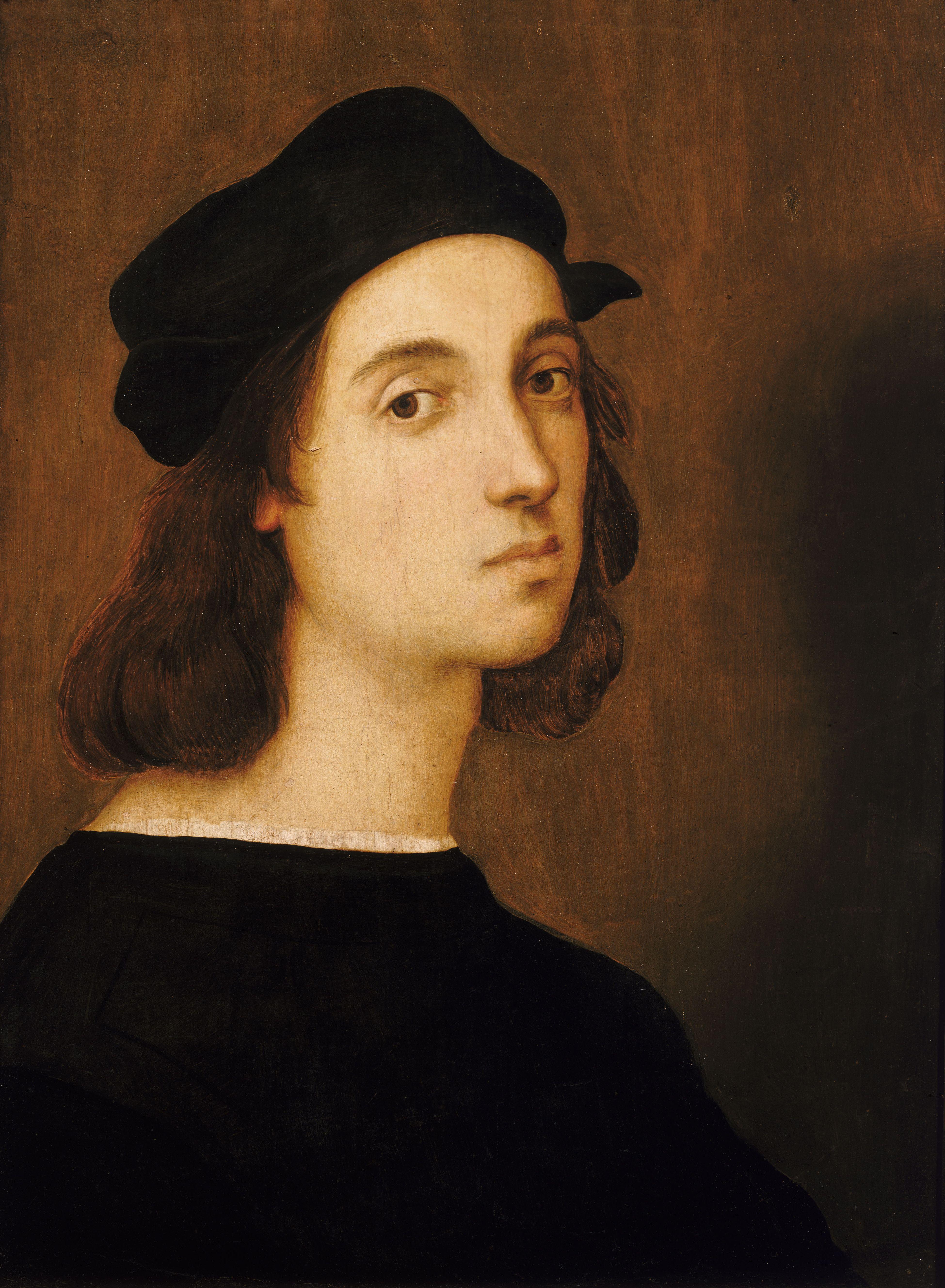Probably on this day in 1483, Raphael Sanzio, one of the greatest Renaissance masters was born. His work is admired for its clarity of form, ease of composition, and visual achievement of the Neoplatonic ideal of human grandeur. Raphael was enormously productive, running an unusually large workshop and, despite his early death at 37, leaving a large body of work. Many of his works are found in the Vatican Palace, where the frescoed Raphael Rooms were the central, and the largest, work of his career. The best-known work is The School of Athens in the Vatican's Stanza della Segnatura. After his early years in Rome, much of his work was executed by his workshop from his drawings, with considerable loss of quality. He was extremely influential in his lifetime, though outside Rome his work was mostly known from his collaborative printmaking.
But, about this work: The veil over the hair, from which the name of this splendid work by Raphael is derived, indicates that the woman is married, yet her precise identity is unknown. According to Giorgio Vasari, who observed the painting in the house of the merchant Matteo Botti in Florence, the work features Margherita Luti, known as La Fornarina, a woman who Raphael loved throughout his life, but the exquisite gown and jewels are more indicative of a commissioned portrait of a young noblewoman. There are some rumors that Raphael's love to La Fornarina was a cause of his death but that's a completely different story.
It is a three-quarter portrait where one of the shoulders is set behind, as already explored by Leonardo da Vinci, emphasizing the spatial depth and modulations of light and shade. The dark background highlights the pink skin tones of the young woman and the luminosity of her pale silk clothing. The gesture of placing her right hand to her heart is perhaps an expression of devotion and love, but the position of the other arm extended in the foreground is a device to spotlight the sumptuous material of the sleeve and the exquisite interplay of light in the folds. Indeed, on closer inspection, the gown is the central focus of the painting, created through extraordinarily masterful skill, while the woman's face, set back slightly and partly in shade, and in particular her deep and penetrating dark eyes, express the subject's inner thoughts. The overall effect is both complex and extraordinary.
Happy Monday everyone!
P.S. Read here more about Raphael, the Renaissance prince of painters!


 Raphael Santi
Raphael Santi